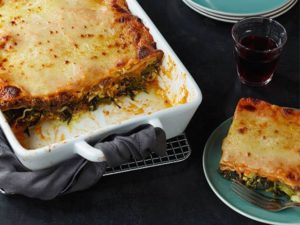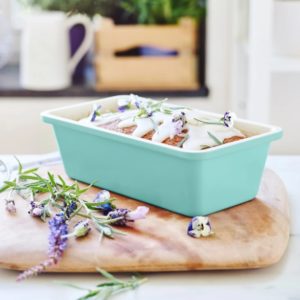A casserole dish with a lid is a type of cookware used for baking and serving a variety of dishes, including casseroles, stews, and soups. The dish is typically made of glass, ceramic, or metal and comes with a matching lid that helps to trap in heat and moisture during cooking. Casserole dishes are available in a range of sizes and shapes, and are a versatile addition to any kitchen, perfect for everything from weekday meals to special occasions. The lid on a casserole dish helps to keep the food warm and moist, and can also be used for serving or storing leftovers. Casserole dishes with lids are a popular choice for potlucks, family dinners, and other gatherings, as they can be easily transported and kept warm until serving time.
What can casserole dishes with lids be used for?
Casserole dishes with lids are versatile cookware that can be used for a variety of dishes, including:
- Casseroles: These dishes typically consist of meat, vegetables, and a starchy binder such as rice or pasta, all baked together in a casserole dish with a sauce or cheese on top.
- Stews: Hearty stews, such as beef stew or chicken and dumplings, can be cooked in a casserole dish with a lid to help retain moisture and flavor.
- Soups: Large batches of soups, such as chili or vegetable soup, can be cooked in a casserole dish with a lid to keep them warm and prevent them from drying out.
- Baked pasta dishes: Lasagna, baked ziti, and other pasta dishes can be baked in a casserole dish with a lid to keep the pasta moist and prevent the cheese from burning.
- Roasted meats and vegetables: A casserole dish with a lid can also be used to roast meats, such as chicken or pork, and vegetables, such as potatoes or carrots.
Overall, a casserole dish with a lid is a versatile piece of cookware that can be used for a wide range of dishes, making it a must-have in any kitchen.
Can you use a casserole dish with lid instead of a Dutch oven?
Yes, in many cases, you can use a casserole dish with a lid instead of a Dutch oven. Both types of cookware are designed for braising, stewing, and slow cooking, and can be used for similar dishes such as casseroles, stews, and soups.
However, there are a few differences between the two types of cookware. Dutch ovens are typically made of cast iron, which is an excellent conductor of heat, and are often used for cooking over a flame or in the oven. They are also typically deeper than casserole dishes, which makes them ideal for cooking larger cuts of meat or for preparing dishes with a lot of liquid.
Casserole dishes, on the other hand, are often made of ceramic or glass and are designed primarily for baking in the oven. They are typically wider and more shallow than Dutch ovens, which makes them ideal for cooking dishes like casseroles and baked pasta dishes.
If you need to make a dish that requires slow, even cooking with a lid to trap in moisture and flavor, a casserole dish with a lid can often be used instead of a Dutch oven. However, if you’re cooking a large cut of meat or preparing a dish with a lot of liquid, a Dutch oven may be a better choice due to its larger size and heat retention properties.
Benefits of using casserole dishes with lids
There are several benefits to using casserole dishes with lids:
- Versatility: Casserole dishes with lids are versatile cookware that can be used for a variety of dishes, including casseroles, stews, soups, and baked pasta dishes.
- Retain moisture and flavor: The lid on a casserole dish helps to trap in moisture and flavor, which can result in tender, juicy meats and flavorful stews and soups.
- Easy to clean: Most casserole dishes with lids are dishwasher safe, which makes them easy to clean.
- Attractive serving dish: Many casserole dishes with lids are designed to be attractive serving dishes, so you can take them straight from the oven to the table.
- Keeps food warm: Casserole dishes with lids can help to keep food warm while it’s being served, which is great for potlucks, parties, and other gatherings.
Overall, casserole dishes with lids are a great addition to any kitchen, as they offer a convenient and versatile way to cook and serve a variety of dishes.
How to use casserole dishes with lids
Here are some general steps on how to use a casserole dish with a lid:
- Preheat your oven to the temperature recommended by your recipe.
- Prepare your ingredients and mix them together in the casserole dish. If you are making a casserole, for example, you may want to layer your ingredients, such as pasta, sauce, cheese, and meat, in the dish.
- Once your ingredients are in the casserole dish, cover it with the lid. Make sure that the lid is securely in place so that it can trap in moisture and flavor.
- Place the casserole dish in the preheated oven and cook according to the recipe instructions.
- When the dish is done cooking, remove it from the oven and let it rest for a few minutes before serving. This will allow the dish to cool slightly and the flavors to meld together.
- When you are ready to serve, remove the lid from the casserole dish and use a serving spoon or spatula to scoop out portions.
- If you have leftovers, you can store them in the casserole dish with the lid on and place it in the refrigerator for up to a few days.
It’s important to note that cooking times and temperatures may vary depending on the recipe, so it’s always best to follow the instructions provided in your recipe.
How to clean casserole dishes with lids
Here are some general steps on how to clean casserole dishes with lids:
- Allow the casserole dish to cool down completely before cleaning. If you try to clean it while it’s still hot, you risk damaging the dish or burning yourself.
- Soak the casserole dish in warm, soapy water for about 10-15 minutes. This will help to loosen any baked-on food or residue.
- Use a soft sponge or cloth to clean the dish, being careful not to scratch the surface. Avoid using abrasive cleaners or scrubbers that could damage the dish.
- For stubborn stains or residue, you can sprinkle some baking soda onto the surface of the dish and scrub gently with a soft brush or cloth.
- Rinse the dish thoroughly with warm water to remove any soap or cleaning solution.
- Dry the casserole dish with a clean towel or let it air dry.
- Clean the lid separately by washing it in warm, soapy water and drying it with a clean towel or letting it air dry.
It’s important to note that some casserole dishes with lids may be dishwasher safe, but it’s always best to check the manufacturer’s instructions before placing them in the dishwasher. Also, if the lid has any knobs or handles that are not heat-resistant, they should be removed before placing the dish in the oven or dishwasher.
How long does it take to use casserole dishes with lids?
The length of time it takes to use a casserole dish with a lid will depend on the recipe and cooking method you are using.
Generally, cooking times for casseroles can vary from 30 minutes to several hours, depending on the recipe and oven temperature. The amount of time it takes to cook will also depend on the size of the casserole dish and the amount of food you are cooking.
It’s best to follow the recipe instructions provided, and use a meat thermometer to ensure that the food has been cooked to the appropriate internal temperature. Once the dish is cooked, you should let it rest for a few minutes before serving to allow the flavors to meld together.
Tips for using casserole dishes with lids
Here are some tips for using casserole dishes with lids:
- Choose the right size dish: Make sure the casserole dish you’re using is the right size for the recipe you’re making. If the dish is too small, the food won’t cook evenly, and if it’s too large, the food may dry out.
- Preheat the oven: Preheat your oven before you start cooking to ensure even cooking.
- Use a meat thermometer: Use a meat thermometer to check the internal temperature of the food to ensure it’s fully cooked. Casseroles should be cooked to an internal temperature of 165°F (74°C).
- Don’t overfill the dish: Leave some room at the top of the casserole dish to prevent the food from overflowing during cooking.
- Use the lid: Use the lid to cover the casserole dish during cooking to help the food cook evenly and retain moisture.
- Add liquid: If your recipe doesn’t call for enough liquid, add some water or broth to the dish to prevent it from drying out.
- Let it rest: Let the casserole rest for a few minutes before serving to allow the flavors to meld together and to make it easier to serve.
- Clean the dish properly: Clean the casserole dish and lid properly after use to prevent any residue from building up and to extend the lifespan of the dish.
Should I get a casserole dish with a lid?
If you enjoy cooking casseroles, stews, or other similar dishes, a casserole dish with a lid can be a useful addition to your kitchen. The lid helps to retain moisture and distribute heat evenly throughout the dish, resulting in a more flavorful and evenly cooked meal. Additionally, the lid helps to prevent spills and splatters in the oven, making for easier cleanup.
However, if you don’t frequently cook these types of dishes or have limited storage space, a casserole dish with a lid may not be necessary. In this case, you can use aluminum foil or another type of cover to achieve a similar effect. Ultimately, the decision to get a casserole dish with a lid will depend on your personal cooking needs and preferences.
Related Posts
Everthing about lasagna pan
Disclaimer: There are affiliate links in this post. At no...
Read MoreWhat is a glass casserole dish used for?
Disclaimer: There are affiliate links in this post. At no...
Read MoreBest Ceramic Loaf Pan Reviews
Disclaimer: There are affiliate links in this post. At no...
Read MoreWhy Trust Us
You will find what you are looking for at dulceriabakery. From classic to luxury brands, you'll find both. We will help you to select appliances that fit your needs, budget and lifestyle. Whether you want to stop by to learn more — or plan to make a major purchase — we’ll treat you like family and assist you every step of the way. Shop with us today to receive friendly and experienced help along the way.



